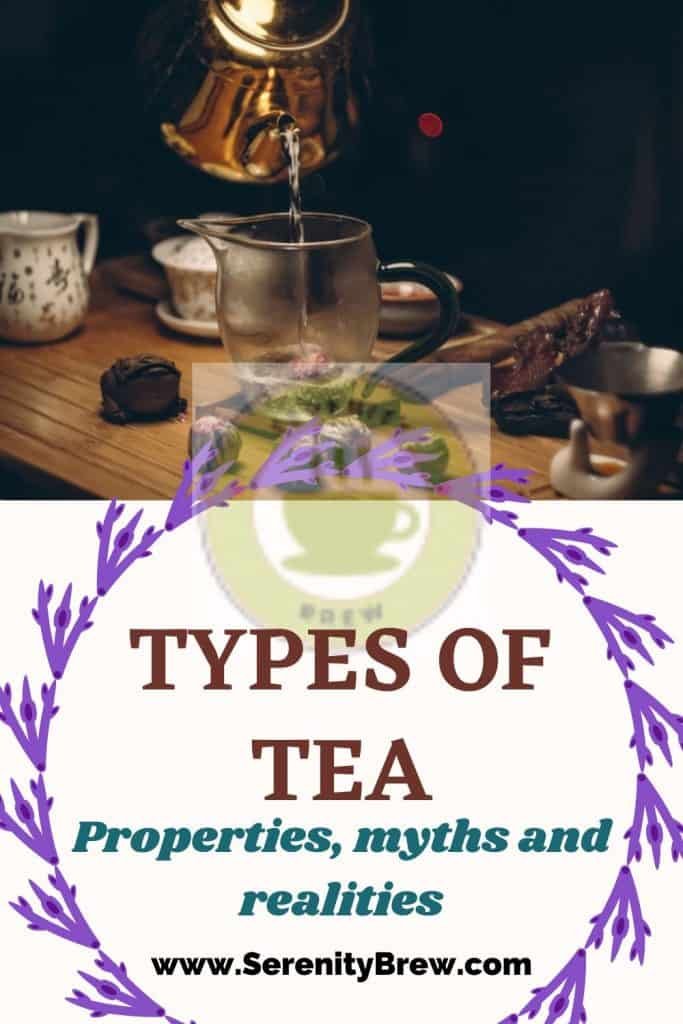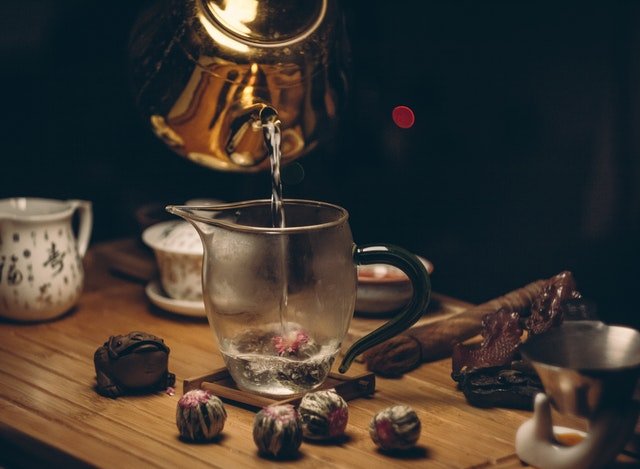
All types of tea are made from the leaves of the tea plant. However, this magical starting ingredient gives rise to a tremendous variety of preparations.
This humble leaf is made according to different traditions in many parts of the world to achieve very different results in terms of aroma, body and also health benefits.
Join us on this bird’s-eye view of the types of tea that exist, their flavors and their properties.
What types of tea are there?
The most curious thing about tea is that the leaves of the same plant can be turned into infusions with totally different flavors.
Depending on the land where they are grown, the climate, when they are harvested and the treatment they receive after harvesting, the types of tea obtained can be worlds apart.
White tea
White tea is made from the most tender buds of the Camellia sinensis. These delicate buds undergo a very weak oxidation process that stops right after they are harvested. For this reason, it is the tea with the highest concentration of catechins, substances with antioxidant properties that fight to protect our body from external aggressions.
It stands out for its subtle and delicate floral and vegetable aromas, light body and mild and naturally sweet flavor. It is considered a tea “for experts”, since a trained palate is recommended to appreciate the complexity and subtlety of its infusion.
Black tea
This variety is undoubtedly the most widespread, at least in the Western world. We all know it, although we may not know that there are many types of black tea.
Its differential point with respect to other types of teas is the extensive oxidation process that the leaves go through during its preparation. Black tea is totally oxidized and, for this reason, it has the most intense aromas and the most resounding body.
In a black tea, you can find aromas with character and more evident than in the case of white tea or green tea. Roasted, malted, woody, caramel, dried fruit and a long etcetera aromas are possible.
Green Tea
Much has been said about the properties of green tea in recent years. Famous for its slimming potential, it differs from other varieties such as black for its low degree of oxidation.
An especially important phase in the production of green tea is to stop the oxidation process. While in Japan steam is used, in China they choose to lightly toast it in a wok. These processes, of course, affect the final taste.
Green tea tends to have a light body and vegetal aromas. In the case of Japanese teas, they are often described as having floral and fresh herb aromas, while Chinese teas are distinguished by their herbaceous aromas and hints of toast.
Red tea
Pu-erh, known in the West as red tea, undergoes a special fermentation process that determines its characteristic flavor. This point is quite unusual, there are not many fermented teas.
Shorter fermentation times produce more astringent teas with hints of bitterness, while aged ones provide more complex and smooth flavors.
Red tea aromas are often described as earthy. Lower quality ones may bring to mind fish or mold.
Blue tea
Oolong, or blue tea, is grown primarily in Taiwan and China. It is halfway between the maximum oxidation of black tea and the little oxidation of green tea. However, it has a very broad spectrum and, therefore, there are oolongs close to green tea and others more similar to black tea.
Due to its variability, it is difficult to define the taste of oolong. We can say that, as a general rule, it is smooth with fruity and/or floral hints, although infusions with woody, toasted or fruity touches, among others, can also be found.
Yellow tea
This variety of tea is very rare and expensive due to its complex brewing process. It is a tea that is slightly oxidized inside cloth packages that are moistened with steam. Thus, it obtains its characteristic yellow tone and its flavor softens. It loses astringency and a subtle infusion rich in nuances is obtained.
Myths and realities of the types of tea

Tea has less caffeine than coffee.
Reality but… there are teas, such as black tea, that exhibit a significant amount of caffeine, closer to that of coffee.
However, it is worth clarifying that, due to its L-theanine component, teas provide an increase in relaxed attention, far from the overstimulation of caffeine. In addition, said effect would last longer.
If you want to know what type of tea has the most caffeine, don’t miss our ranking of the teas with the most theine.
Drinking tea during pregnancy and lactation is recommended
Myth. Doctors remind pregnant and lactating mothers to limit their intake of caffeine, since too much of this substance could cause problems in the development of the baby. While in lactation, an excess could cause digestive problems or in the rest of the little one.
For this reason, if you drink tea, it is recommended to opt for varieties that contain a lower concentration of caffeine, such as white tea (less than 1 mg), or fruit or herbal infusions.
Note: Check with your doctor before preparing herbal infusions as some are discouraged.
Drinking tea prevents oxidative damage
Reality. Tea contains polyphenols, antioxidant compounds that fight free radicals that generate oxidative damage that ultimately triggers chronic diseases and premature aging.
Several studies have shown that black and green tea help protect DNA; however, some varieties, such as white tea, have higher concentrations of antioxidants, which is why they are attributed a greater protective action.
A cup of tea takes care of the heart
Half reality. The flavonoids present in tea act by lowering cholesterol and blood pressure, two of the markers of cardiovascular risk. For this reason, it is considered that drinking tea would have a protective effect on the heart. However, it is necessary that you lead a life with healthy eating habits to prevent these diseases.
Green tea slimming
Although the data is not 100% conclusive, various investigations indicate that its catechins allow fat burning when exercising and even when resting. However, other studies suggest that white tea may have a greater ability to activate metabolism than green tea.
On the other hand, caffeine is associated with the burning of stored fat. Following this premise, black tea would be the most suitable for losing weight.
As you can see, each type of tea has different flavors, aromas and properties. Our opinion? Taste them all, they are a true festival for the palate and, in addition, you can benefit from their wonderful properties.
